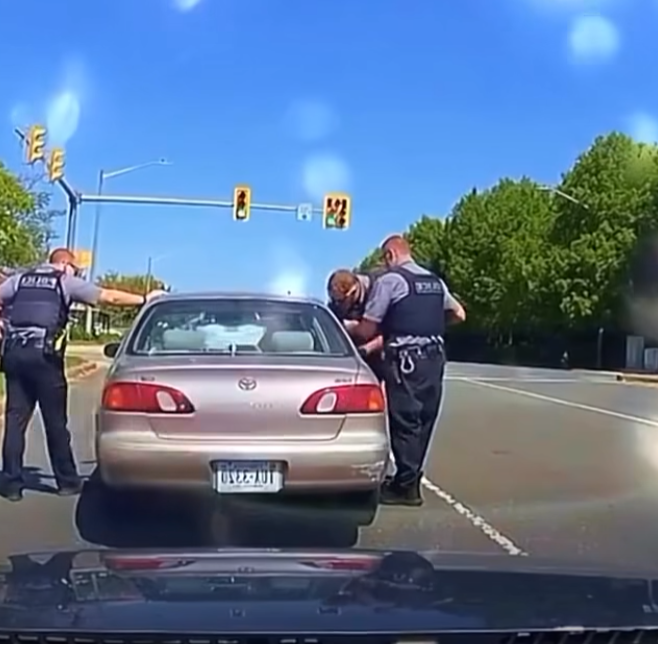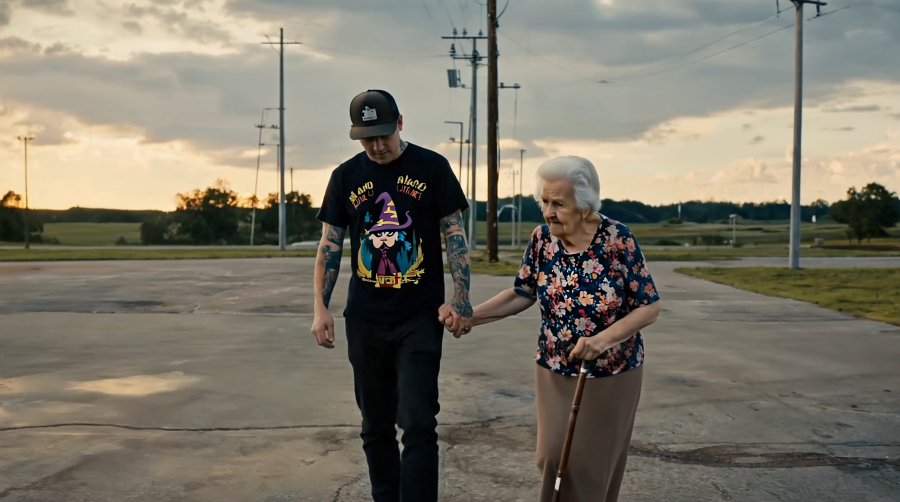What began as an ordinary Friday morning traffic stop in Nashville ended in tragedy—an incident that has left the city stunned and sparked conversations about policing, public safety, and community trust. Within minutes, a routine interaction escalated into an exchange of gunfire, leaving a police officer critically wounded and a young woman dead.
The encounter has led to renewed scrutiny of how such situations unfold, the risks law enforcement officers face daily, and the ongoing challenge of fostering positive police-community relationships. Video footage from body-worn and dashboard cameras provides a clearer view of what took place, but also highlights the unpredictable nature of high-pressure encounters.
The Stop That Sparked It All
Metro Nashville Police say the incident happened around 9:30 a.m. when Officer Josh Baker, a 14-year veteran, initiated a traffic stop on a black Chevrolet Camaro. The car was registered to 42-year-old Demond Buchanan, a known felon with multiple outstanding drug-related warrants. Officers believed this stop might lead to his arrest.
However, the driver turned out to be 31-year-old Nika Holbert. Her connection to Buchanan remains unclear. Initially, the stop appeared routine. Officer Baker calmly spoke with Holbert and asked her to comply with instructions.
Things changed quickly when Baker searched her handbag and found what appeared to be illegal substances. From that moment, the tone of the interaction shifted dramatically, setting the stage for what followed.
Tense Moments Captured on Camera
In an effort to maintain public trust, Metro Nashville Police released both body cam and dash cam footage of the encounter. The video shows Officer Baker attempting to detain Holbert after finding the suspected narcotics. Holbert, visibly distressed, refused to be handcuffed, repeating that she had “done nothing wrong.”
As the situation escalated, Holbert moved back toward the driver’s seat. Officer Baker deployed his Taser to stop her from fleeing, but it was ineffective. Holbert then pulled out a firearm, prompting Baker to shout commands for her to drop the weapon.
Moments later, gunfire erupted.

Gunfire and Aftermath
Holbert fired, hitting Officer Baker in an area not protected by his vest. Despite his injury, Baker returned fire as Holbert attempted to flee in the Camaro. She discarded the weapon during the escape but soon crashed nearby.
Emergency responders transported her to Skyline Medical Center, where she was pronounced dead from a gunshot wound. Officer Baker was rushed to Vanderbilt University Medical Center, underwent surgery, and was later reported in stable condition.
Law Enforcement’s Response
Police Chief John Drake addressed the public shortly after the incident, emphasizing transparency. He noted that Officer Baker tried multiple non-lethal options—including verbal warnings and a Taser—before resorting to using his firearm.
“Our officer took every step to de-escalate before being forced to protect himself,” Drake said.
The Tennessee Bureau of Investigation (TBI) has since taken over the case. Their findings will be submitted to the District Attorney’s office to determine whether further legal steps are necessary.
Family Speaks Out
Holbert’s adoptive mother, Lisa Holbert-Gooch, spoke publicly about the shooting. She acknowledged that her daughter made a fatal mistake by drawing a gun, but also expressed heartbreak over how quickly things spiraled out of control.
Her statement reflects the emotional complexity families face when tragedy strikes in such a public, violent way.
Community in Mourning and Debate
Across Nashville, the incident has stirred deep emotions. Vigils have been held, and conversations continue around policing practices, safety, and systemic trust. Civil rights advocates have called for transparency and accountability, emphasizing the importance of ongoing dialogue between law enforcement and the communities they serve.
For some, the incident underscores the real dangers officers face. For others, it’s a reminder of the need for better strategies in handling tense encounters.
Routine Stops, Real Risks
This case highlights the dangers involved in what police often consider “routine” stops. Officers frequently deal with:
- Unknown criminal histories of drivers.
- Hidden weapons inside vehicles.
- Fear-based reactions, often driven by past trauma or distrust.
For Officer Baker, the situation turned life-threatening within seconds—despite his training and adherence to protocol.
Understanding Escalation
Why do simple stops turn violent? Experts point to several factors:
- Fear of being arrested, especially when illegal substances or warrants are involved.
- Distrust in law enforcement, fueled by broader societal issues.
- Split-second reactions, where fear overrides logic.
Recognizing these triggers is crucial in preventing future tragedies.
Transparency and Accountability Matter
One of the most significant parts of this case was the quick release of video footage. Public trust often hinges on how openly agencies handle such incidents. By sharing the footage early, the department aimed to reduce speculation and promote accountability.
While transparency doesn’t erase the loss, it helps communities process what happened and push for improvements.
Independent Investigation Moving Forward
The involvement of the Tennessee Bureau of Investigation ensures that an impartial review is underway. Their role is to gather facts without bias, providing a foundation for any legal decisions to follow.
Once their report is complete, the District Attorney will determine whether further legal action is warranted.




